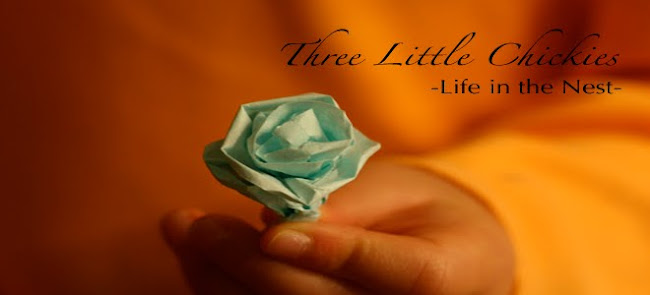♦DiggIt! ♦Add to del.icio.us ♦Add to Technorati Faves
Wednesday, December 9, 2009
Remembering my friend
♦DiggIt! ♦Add to del.icio.us ♦Add to Technorati Faves
Friday, December 4, 2009
Panna Cotta inspired by Top Chef
For some reason, panna cotta appears to be the next go-to dessert on Bravo's Top Chef lately. A few seasons ago, it was the "scallop," whether actual an mollusk or an imitation made from bananas. But this year, chef after chef seems to be making variations of panna cotta. Or attempting them. They mostly seem to fall drastically short of the mark, garnering criticism along the lines of "tastes like a hockey puck."

♦DiggIt! ♦Add to del.icio.us ♦Add to Technorati Faves
Friday, November 27, 2009
Grateful for what might not have been
And photo paper
And the thirty years
That separate us.
And mostly, you seem
transparent--
Blue eyes looking out
from plans and details
and preoccupations with, premonitions of
long and good
days to come.
In your winter coat and muckluks, you are
bright with snow light
on your cheeks and in your eyes.
And I--
I am there, too.
on my sled,
small and red, veloured and fat-fisted,
not yet a miniature you,
not yet aware of the camera
or the spring that follows.
2
There is a chemistry of shadow and light
on certain nights
when the fan above my bed starfishes
itself across the ceiling,
past the rattling cage of
minutia mind
to the rocky beach
of memory.
I stand on the shore
skipping thoughts along the flashing lake
singing in clean strokes across the water
until they sink
like obsidian into oil.
And here you are again,
but opaque to me
This time.
And it's clear to me that
those captured, auspicious moments
left a world of questions
out
of the frame.
What must you have thought,
worried over, as your own night-
beach tumbled into your room
and roared you awake with its waves?
3
I have learned that
if I touch the glass, or
ruffle through papers
or sing stones over water 30 years deep,
I can imagine you as
Another me.
And for a moment,
I can see the world outside the lens.
And as for the me that was then, well,
She
is lost at the bottom of the oily lake,
Waiting
(for now)
for a tide.
♦DiggIt! ♦Add to del.icio.us ♦Add to Technorati Faves
Monday, November 23, 2009
Purple and green







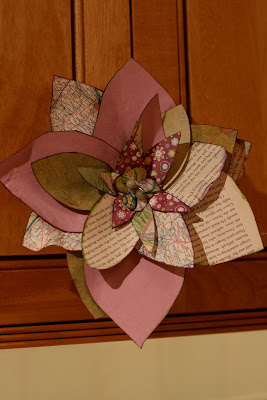

♦DiggIt! ♦Add to del.icio.us ♦Add to Technorati Faves
Wednesday, November 18, 2009
Influenza Series, Part IV: The tricky part for me--making sense of risk
What I'm doing:
I'm attempting to get the vaccine for us. Ada has had one dose, and needs a followup that may come by January. Esme and I have had no luck in locating one, though I check clinics a few times a week. My husband should get one at work, but--like everyone else's--his vaccinations have been delayed.
I'm also practically swimming in alcohol-based hand cleaners. The girls are pretty well trained on washing up after every trip outside, and before meals, and after visits, and on getting in the car...and so on. Ada tries to be conscientious about that stuff at school, as much as she can. And I have her change her clothes when she comes home from school.
When a whopping 20% of her school was out, we kept Ada home for over a week. After 10 days, it was my hope her first vaccine had at least kick started an immune response against H1N1. A leap of faith for me, but...
I beg off shaking hands, saying "Oh, I've got a cold." Inoffensive, I hope--effective? Who knows? But it make me feel like I'm at least doing something...
What I want to do (but don't):
If I think about it too much, I sort of want to hide in our house. I get nervous about going to a big public gathering, especially one where there are lots of other little kids who sneeze, and wipe, and do all that gross stuff kids do (hey, I know--my kids do it, too.) I want to huddle down in our own little nest and just wait it all out. I want to beg or bribe or get that vaccine right now, and cross my fingers and cast some special spell to keep the flu away from us.
You might have noticed that many sensible and rational people, given the same facts, have a less alarmist reaction about getting this year's flu, or getting sick in general. They trust that whatever happens won't be so bad, that either it's no big deal to start with, or, if it does get to be a problem, that someone will take care of it.
Both of these sensible reactions are based on trust, and as I examine my own fears, I realize I don't feel it. At least not in this capacity. My own concern about the influenza outbreak this year is based on fact, yes--but it is amplified 100 times by my own insecurities.
As I've brooded, I've also tried to see my own process of worrying in an objective way. What is setting me off, I've wondered? I've wondered this especially as I find myself watching a newscast and replying back to the television, retorting something a reporter said about influenza. Why am I acting like this? This is not where I want my energy to go--into stridently arguing with a reporter on tv. Or reading every little thing I can about H1N1. When I step back far enough from myself, I can see that what Kirie is doing is called obsessing.
It's hard to admit that. It's hard to say that what I perceive as a real threat might not be as real to someone else. It makes the ground under me feel shaky. But the fact is there: my obsessions might be based on fact to start with, but they spiral way out of reach of normal at some point. And they tend to be related to my own need to control my environment, to create an illusion of impenetrable safety. On so many levels, I crave predictability, because it solidifies that illusion, like a playback loop whispering: all is well; you are safe. all is well; you are safe.
I've said that this year's H1N1 influenza scenario hits all my panic buttons. Essentially, for me it created two perfect storms. One of those storms is, certainly, the reality that this is a pandemic. The other storm is clearly in my mind--the storm of unpredictability and distrust.
The first issue for me is the unpredictability. The virus is unpredictable, and easily spread, even by people who seem well (because it is contagious even a day before symptoms appear). What appears to be one thing: "just flu" or "don't worry, I don't have it!" might be something else entirely. Of course, the flipsides to these (the ones that slip my mind too often) are a) most people who get sick with flu WILL NOT find themselves at death's door, and b)most people who are walking around town are not in a contagious state of influenza.
The second issue for me is the trust. Basically, I don't trust people in general to take this flu seriously. I really don't trust people to wash their hands, to cough in their sleeves. I don't trust that there will be adequate vaccinations for people who want them *before* the virus peaks. I don't really trust that a cold is just a cold at this point. If I hear someone is coughing, I'm assuming it's flu. I don't trust the media to give a clear portrayal of what flu is, or isn't. I don't trust the government to really stay on top of tracking the changes of the virus, to put funding toward a new method of making the vaccine. I don't trust people to believe me. (Ah, the irony!)
I don't trust, I don't trust. I hear these all strung along in my head as I write this and I feel another feeling echoing it: I feel lonely. That Cassandra-like sensation of being disbelieved is, at its heart, isolating. And overwhelming. Feeling isolated and overwhelmed are cues for me that my worries are not completely related to the influenza pandemic alone. Really, my worries are rooted in my past.
A little headshrinking: My childhood was relatively chaotic--my parents, though they loved me, were somewhat absentee. The day-to-day of my life was far from predictable, people's emotions were volatile--my own, my brother's, my parents'. My own physical environment felt out of my control, and very different from that of my peers. I often felt different and alone, and misunderstood by most people. I could not, if pressed, have imagined what my future would look like. I didn't really trust that I would have a real adulthood--because I couldn't imagine what that could be.
Of course, my adulthood did come to be. Sometime in my early 20s I discovered that I could try to shape my own existence a little. And in my grown-up life, I have predictability in abundance. Calm rules the day--literally, it leads the list of our family rules, which we have written out. Sure, there is the messiness of life with little kids, but it is joyful, and welcomed. Trust is the keystone between my husband and me, between my kids and me. I often catch myself saying to them, "You're doing great. You can do that. I trust you." And I do trust them. I have, as an adult, become faithful in a religious sense, and I trust God, too.
It was not my hope in writing this series to spin up fears, but rather to show how the genesis of my own worries about influenza. I also hoped that writing through my own thought process would help bring some clarity to me about why I have become obsessed. If you have gotten this far into my posts, you must see that, as a threat, influenza sits neatly someplace between something very scary and something to be brushed off as inconsequential. When you consider it, it's best to recognize both extremes as unreasonable, and try, as I am, to find some middle way.
Yes, H1N1 is frightening because it does have a potential to become a terrible flu--one that resembles 1918. Actually, that potential is in every influenza. Given those facts, any objective person would admit that flu shouldn't be taken lightly.
But of course, the potential is there for this to NOT become a deadly flu. And the numbers indicate--in fact, they indicated this in 1918 as well--that the vast majority of people who get influenza recover. Given those facts, any objective person would admit that hiding from the world doesn't actually mitigate the risk--the minimal risk.
The scary potential and the benign potential exist simultaneously, all the time, in all actions. Just writing about that uncertainty makes me catch my breath. I refocus, I breathe, I vow to accept that calmly. I have to push myself to remember these things, but I do. I do push past them and go out into the world, send Ada back to school, take Esme to swimming class, make my art, have playdates, Halloween parties, and see my friends and neighbors. To meet me, you would never guess at the contradictions wrestling each other in my mind, but they are there. And someday, I hope, to accept them without anxiety.
♦DiggIt! ♦Add to del.icio.us ♦Add to Technorati Faves
Tuesday, November 17, 2009
Part III on Influenza: What it is not. An anti-definition
- Flu is a common illness, but--surprisingly--it's often an unknown quantity. It's not always easily diagnosed at the bedside, as there are a whole host of "influenza-like" viruses. The symptoms of flu can vary widely from person to person, from something that resembles a cold, to something closer to pneumonia. In particular, this flu is presenting with *no* fever in some people. This, again, makes it trickier to diagnose. Even a test for that's done at a doctor's office is not 100% reliable for determining if the patient has flu.
- There are several types of rapid tests used in clinics, but they all operate in mainly the same way: they detect influenza viral nucleoprotein antigen. To put it simply, the rapid tests search the sample for elements of protein from the influenza protein. What these tests can't do is determine specifically which subtype of flu a patient has. Unfortunately, samples vary, and not everyone who gets these rapid tests gets an accurate result. The CDC advises clinicians that they should not rule out flu based on this test because there is a possibility of a false negative (the test says no flu, but you actually do have it). And again, there are false positives, as well. The tests that do the actual subtyping of flu are the ones done by the CDC and by state health departments, and these are accurate, but expensive, and time consuming.
- Flu is constantly using several mechanisms to adapt itself. Antigenic drift is happening all the time with flu. The flu circulating now will not be the flu that circulates next year, or perhaps even at the end of this flu season, in the spring. That constant change just adds to the uncertainty.
♦DiggIt! ♦Add to del.icio.us ♦Add to Technorati Faves
Part II on Influenza: a little primer to add to the barrage of information you've already gotten
♦DiggIt! ♦Add to del.icio.us ♦Add to Technorati Faves
Monday, November 16, 2009
In-flu-enza: A post in several parts
There was a little birdHer name was Enza.They opened up the window,and in-flew-Enza.--American jump-roping song popular in 1918-1919
Did I say earlier that I had willed myself away from worrying? That history soothes? Because that last paragraph is nothing if not melancholy. But as I consider history, I find a strange comfort in the juxtaposition it presents. Thinking about the past offers that rare chance to hold in the mind, simultaneously, the ideas of both mortality and hope.
♦DiggIt! ♦Add to del.icio.us ♦Add to Technorati Faves
Sunday, November 1, 2009
Halloween Redux 2009



♦DiggIt! ♦Add to del.icio.us ♦Add to Technorati Faves
Saturday, October 31, 2009
Mermaid costume endnotes

- Ada's scaly blue tail was a perfect fit, but because I sewed a blue sequin border where the blue tail meets the fin, we lost some of the stretchiness of the blue scaly fabric there. As a result, Ada had a bit of a challenge walking.
- I made the cape with the idea that it was going to be cold, and, for the first time in decades, it wasn't. The evening temperature was around 68 degrees! Fortunately, the cape is something that will work for magician play, or fancy dress, and it's reversible. I'm hoping she gets more use out of it.
- As I was attaching the bodice to the scaly tail, I realized they didn't match: the bodice was too wide, and the tail was too narrow. After some reading, I realized I could probably make a few darts in the bodice to decrease the waistline. I had no idea how to do this, so--more reading. After some fiddling around with samples, and lots of ripped stitches, I got four darts into the waist, and--big grin here!--it worked.

- The biggest time-eater was sewing a lot of this by hand, from attaching all the sequin tape to putting the layers of the bodice and tail together. My hand sewing is atrocious, but maybe it got a little better with the practice...one can only hope.
- The fin was tough to fit onto the scaly tail--it flattened out at first, so I sewed a little triangular piece to each side to make it more circular (essentially I made two gusset-like pieces, I think), and then suddenly it had dimension.
- I did decorate an old pair of shoes for the costume, too. I used pale pink sequined tape, glitter, and some little shells. But because I glued all of this onto the shoe--they were too stiff! Ada shuffled around a bit and admired them, and then we decided to just keep them as a decoration.
♦DiggIt! ♦Add to del.icio.us ♦Add to Technorati Faves
Thursday, October 29, 2009
Mermaid costume in process

♦DiggIt! ♦Add to del.icio.us ♦Add to Technorati Faves
Tuesday, October 27, 2009
Because the mind of a toddler is ever-changing,
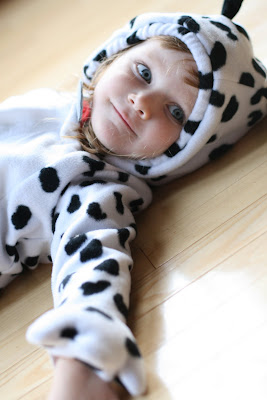
a wise grownup should not commit to a handmade Halloween costume.

♦DiggIt! ♦Add to del.icio.us ♦Add to Technorati Faves
Wednesday, October 14, 2009
Balancing Act and a Time Audit

Like every other woman I know, I spend altogether too much time trying to "achieve balance." The fact that that tired phrase includes the word "achieve" is telling. It's held up as a goal for the modern woman; being balanced is an achievement, balance is a treasure we "find."
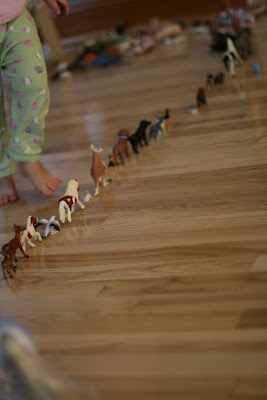
- the endless washing and folding of laundry
- the scrubbing of dishes
- the tidying of toys and books and markers that creep under chairs and couches and everywhere else
- the reading time--how one book turns to ten books, and afternoons are dreamed away with a curious toddler cuddled in a lap
- the continual process of reorganizing spaces--drawers, cabinets, shelves
- the packaging and mailing of gifts and letters
- the coaxing of said toddler into naptime, or bedtime, or getting dressed time, etc.
- the visits to friends' houses, the entertaining when a friend visits ours
- the baking--for school, for friends, for our own cookie jar
- the endless sweeping and vacuuming
- the workout--and recovery!
- the self-care time, from a simple shower, to a self-manicure, to keeping my eyebrows neat
- the fixing of all things broken--from the leg of a Playmobil deer to the toilet paper holder that's come out of the drywall
- the cleaning of spills, from milk to scat
- the spontaneous walks or outings or explorations that lead us away from the house for untold hours
- the late night "pop ups" from the kids, with worries about monsters, or excitement about caterpillars
- the mommy-time reading--from books, to blogs, to the newspaper--that fills my mind as I move through the other tasks of the day
- making any kind of art at all--from music to painting
- the phone calls to and from friends
- the slow and savored time spent gathering fruits and flowers from the garden
- the whole chase of groceries, from shopping to putting things onto shelves
- the minutes (or hours) that can be lost because you sat down, and were too exhausted to get up to finish any of the above...
♦DiggIt! ♦Add to del.icio.us ♦Add to Technorati Faves
Sunday, September 20, 2009
The shifting nightscape of my insomnia
♦DiggIt! ♦Add to del.icio.us ♦Add to Technorati Faves
Friday, September 11, 2009
Repost: The sky was blue on September 12th, too...
The stars are not wanted now; put out every one,Pack up the moon and dismantle the sun,Pour away the ocean and sweep up the woods;For nothing now can ever come to any good.
♦DiggIt! ♦Add to del.icio.us ♦Add to Technorati Faves
Tuesday, September 1, 2009
Because I am learning to focus

I'm learning to focus on what I like to do, and (at least in terms of art/craft), I am going to start delegating the things I don't truly enjoy.
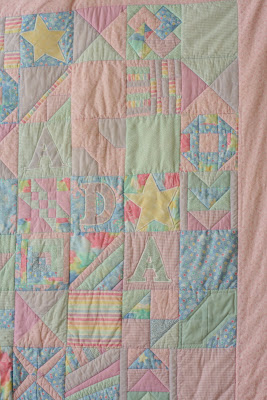
♦DiggIt! ♦Add to del.icio.us ♦Add to Technorati Faves
Friday, August 28, 2009
Message from a Cornet Case

In some of my favorite types of fantasy stories, a person is able to bend the constraints of time and space and communicate to their future or past self. I find this notion endlessly fascinating—what would I say to the Kirie of 20 years ago? What would she have to tell me? Would she look at the 40-year-old Kirie with skepticism, or admiration, or worse—shame? Just imagining the possibility to encounter my future or past self sets me aflutter with excitement. I hope that’s something I have in common with the Kirie of 1989. Enthusiasm seems to be a common thread in all the times of my life, and it’s my aim to buoy that feeling forever.
Over the past few months, I’ve revisited an old enthusiasm of mine—a love of music. As things happen, we recently got a piano, and both Ada and I immediately started lessons. Ah, wonderful thing, that piano! Ada and I literally debate about who will get the next turn to play, and by my best guess, is that at minimum, we are playing an hour a day, every day. Ada is playing with equal parts precision and passion, and it is a pleasure to listen to her play. Esme has given the music a try, too, but she is still a little small to play the keys. Her contribution is mostly singing with gusto, and dancing with abandon to our songs.
I have never formally played piano before, but I have been an avid admirer of those who can. When I was a teenager, I loved to sing and to act and (try) to dance, and I was often around amazingly talented peers who could do all three with skills beyond their years. One girl in particular was especially gifted not only with a hauntingly lovely voice, but an innate sense of music that allowed her to play and compose rich, beautiful songs that seemed to come from some special place that only she could access. Vickie was so talented that when she would perform or practice, I literally felt chills run down my back. I was in awe of her then, and it pleases me no end to think that she still is composing and singing today.
When I started lessons on the piano, some element of myself felt as though I had stepped back in time, to that space when self-made music was such a part of me. How much I had wished I could play piano so that a real song would come forth, something I could sing to, and carry in my head all day. As soon as I started working with our piano teacher, Ellen, I had the sense that that long-closed door had opened wide for me again.
Ellen understood immediately why I was looking to learn piano. Certainly, my interest has nothing to do with performing recitals or padding a resume or impressing anyone. Rather, it’s that I want to find another way to let some beauty into my life. Music is its own language, and while it’s been awhile since I’ve used it, I’ve been longing to return to it for years.
Ellen’s teaching approach has been to work with me to learn the basics of piano, but also to let me push ahead, to play with composing and improvisation and things a beginning student normally wouldn’t do. It is thrilling! At night I am dreaming of music, and in the day, my fingers are playing the notes on imaginary keyboards, somewhat obsessively. And it is such a pleasure. I’ve been working out very simplified versions of songs I love to sing, and I found out that I can play a few songs from basic beginning songbooks. It is so fun to sing and play with the girls—and this after only a month of lessons!

Ada, too, is learning the basics, as I said, with precision. But Ellen also has her feeling the passion that goes with writing music on her own. With Ellen’s help, Ada has written—with notes and time signatures!—small songs about flowers, and butterflies, and our cat. And in the process, Ada’s learning is progressing exponentially. She’s not only reading the words, playing the song, the rhythm, and singing—she is able to read the notes as well. I was bursting with pride when, after her third lesson, she was able to effortlessly identify each note on the treble clef scale by name. She is a quick study, and she is falling in love with the music, too. I couldn’t be more pleased.
And, as things so often do, the music has multiplied. We’ve been playing rhythm instruments like wood blocks, maracas, the triangle. And I’ve pulled out my old cornet, a two-toned beauty that I played for six years when I was a young girl. I surprised myself, when I could immediately play songs for the girls, and I was able to teach them how to “buzz” on the mouthpiece and get some nice blares out of the instrument. Imagine the sound of an elephant’s cry, and you’ve heard Esme’s playing. Not bad for a two year old.
It was with the cornet that the message arrived. On Sunday, as I opened my battered cornet case, I found the most amazing communiqué from my past self. On a 4 x 6 note card, scrawled in green ink, was a to-do-list that was so typical of me that it might have been written last week. But the date on the top of the card was Thursday, August 7, 1992.

In August 1992, I was on the very brink of a life change, but I didn’t know it. Those days full of routines marched me closer to a series of important days arriving only months later: The day when I would leave an abusive relationship, the day I would meet the man I would marry, the day I would graduate from college. And all those days flowed toward lovely today…but what was I to know of that future as I contemplated what needed doing on Thursday, the 7th of August, 1992?
On Sunday, August 23, 2009, I sat on the floor of my studio with my open cornet case and I mused about the oddities on the old list: 5 loads of laundry? And this before being married with children. And tanning? What was I trying to do to myself? Nylons?
Mostly I wondered why this list was there, nestled carefully in with the mouthpiece. I flipped the card over, and some childlike attempts at musical notation answered my question. It was a song—I had been writing down the notes of a song, clearly something I could play on my b-flat cornet.
So I picked up the cornet, and played with some surprising ease the song I’d tried to capture in late 1992. And as I did so, a bouncy, 22-year-old Kirie materialized along with the ending verse of Chet Baker’s “How Deep Is the Ocean.” --The verse? "And if I ever lost you/how much would I cry? How deep is the ocean/How high is the sky?"
Yes, that fits. Message received. I think about that Kirie who comes back to me with those ringing notes, and I smile to think about how intense I was! How dreamy! I loved that song then, and hearing it fresh from the bell of my horn, I love it still. And that younger Kirie, as clear as the ringing notes, tells me to play the music, to hold onto that childish dreaminess. If I could send a message back to her, it would be: Thank you for visiting me! Please know that I hear you, and thank goodness I remain as enthusiastic, dreamy, and intense as ever. Thanks for the memo, sweet girl. Hang in there—your dreams are going to come true, and some wonderful amazing things await you.
As for how to deliver that message—I leave that to playing the music and seeing where it takes me.
♦DiggIt! ♦Add to del.icio.us ♦Add to Technorati Faves
